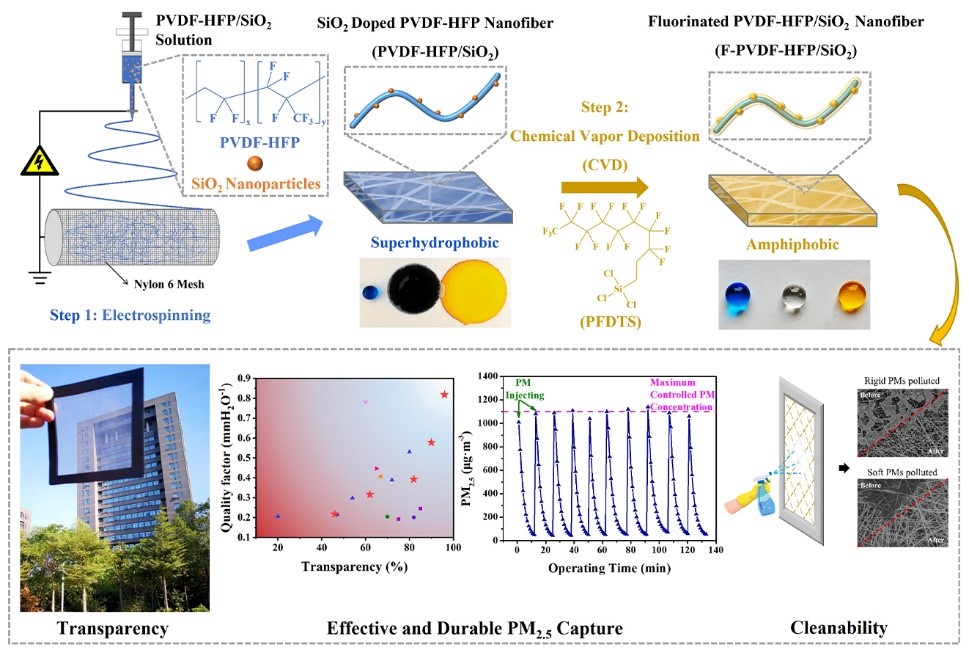Fine particulate matter (PM2.5) poses a threat to human health. Fiber filtration is the most popular and effective method for removing fine particulate matter. The ZHENG Yuming group at the Institute of Urban Environment of the Chinese Academy of Sciences has devoted a significant work on the development of high-efficiency air filters, such as the electret fibrous filters with a high dust load (Separation and Purification Technology, 233 (2020): 116002) and the hierarchical polyamide 6/ polystyrene/polyurethane micro-nano fibrous filters with high filtration efficiency and low air resistance (Journal of Membrane Science, 633 (2021): 119392).
Fibrous filters installed on windows may successfully block PM2.5 from entering the room during ventilation, which is energy-saving and environmental friendly. Most window-mounted air filters are difficult to clean and recycle, have a different in balancing between air resistance and transmittance. Considering this, there is a high need for developments in transparent, washable, anti-haze window-based air filters.
Electrospinning and polyfluoroalkane vapor deposition were utilized to fabricate a composite fibrous filter of polyvinylidene-hexafluoropropylene copolymer doped with silicon dioxide (F-PVDF-HFP)/SiO2 with a rough surface and low surface energy. The fibrous filter has a high porosity (90%), excellent transmittance (80%), high filtration efficiency (99.59%), and low air resistance (0.13% of atmospheric pressure). Due to the combined effect of the rough fiber structure and the low surface energy of fluoride, the produced air filter is superhydrophobic and oleophobic, allowing it to be easily cleaned and reused by spraying. Due to the durability and tolerance of the amphiphobic surface, the filtration performance and transmittance of the fiber filters did not decrease significantly after more than 10 cycles of "pollution-cleaning".
Related research of Preparation of transparent, amphiphobic and recyclable electrospun window screen air filter for high-efficiency particulate matters capture is published in the Journal of membrane science. Prof. ZHENG Yuming and Assoc. Prof. ZHONG Lubin of the Institute of Urban Environment are co-corresponding authors, and PhD student CHEN Jiangping is the first author. This research was supported by the National Key Research and Development Program (No. 2022YFC3702800) and the Youth Innovation Promotion Association of Chinese Academy of Sciences (2020307).

Fig. 1 Development and characterization of the transparent, washable window-based air filter
Page:https://doi.org/10.1016/j.memsci.2023.121545
Contact: ZHENG Yuming
Institute of Urban Environment, Chinese Academy of Sciences
E-mail: ymzheng@iue.ac.cn